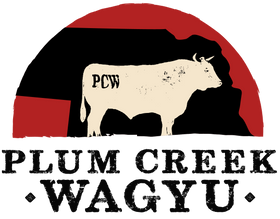A Year on the Ranch: The Lifecycle of Wagyu Cattle
Raising Wagyu cattle is both an art and a science, requiring meticulous care, nutrition, and attention to detail. Each stage of their life is crafted to ensure they grow healthy, stress-free, and ready to produce the highest-quality beef. Here’s a look at what a year on the ranch looks like for these remarkable animals.
The Early Months: Calving and Bonding
Wagyu calves are born after a gestation period of around nine months. From the moment they take their first steps, the focus is on nurturing and care. Calves stay close to their mothers, feeding on nutrient-rich milk to build their immune systems and grow strong. During this phase, ranchers ensure a calm and safe environment, free from stress or predators.
Growing Strong: The First Six Months
As the calves grow, they transition from milk to a carefully crafted diet of grasses, hay, and grains. Nutrition at this stage is critical, as it lays the foundation for the marbling that will develop later. Ranchers monitor their weight and health closely, ensuring the young cattle have ample space to roam and graze freely.
The Yearling Stage: Focused Nutrition and Care
At around six to twelve months, Wagyu cattle enter the yearling stage. This is when the transition to a specialized feeding regimen begins. Their diet includes high-quality grains, silage, and other ingredients tailored to enhance marbling. Regular check-ups, vaccinations, and health monitoring are part of the routine to keep the cattle thriving.
The Finishing Phase: Marbling Perfection
From twelve months onward, Wagyu cattle enter the finishing phase. This is where the magic of Wagyu’s famous marbling takes shape. The cattle are fed a high-energy diet rich in grains, which promotes the intramuscular fat that gives Wagyu beef its buttery texture. This phase lasts up to 300 days, with ranchers carefully balancing nutrition and comfort to ensure optimal results.
The Environment: Stress-Free Living
Throughout their lives, Wagyu cattle are raised in a low-stress environment. Clean water, ample shade, and gentle handling practices are priorities on the ranch. Stress-free living not only ensures the well-being of the cattle but also enhances the quality of the beef.
The Result: Exceptional Wagyu Beef
After 24 to 30 months, Wagyu cattle are ready for processing. Their carefully managed lifecycle results in beef with unparalleled marbling, tenderness, and flavor—a true testament to the dedication and expertise of the ranchers who care for them.
Related Posts
10 Quick and Easy Wagyu Beef Recipes for Busy Weeknights
From Ranch to Plate: Understanding the Wagyu Beef Supply Chain
Wagyu for Every Occasion: Perfect Cuts for Different Events
Sustainability in Wagyu Ranching: Our Commitment to the Environment
Pairing Wagyu with Local Nebraska Ingredients: A Farm-to-Table Experience
Nebraska is a state known for its rich agricultural heritage, offering a bountiful array of fresh produce, meats, and artisanal foods that reflect its commitment to high-quality, locally sourced ingredients. As a state deeply rooted in farming and ranching, it’s only natural that the exceptional Wagyu beef from Plum Creek Wagyu would pair perfectly with the best Nebraska has to offer.
In this post, we’ll explore how to combine the luxurious marbling of Wagyu with locally grown vegetables, grains, cheeses, and other unique ingredients to create a farm-to-table dining experience that celebrates both Nebraska’s culinary traditions and Wagyu's premium flavors.
A Beginner's Guide to Cooking Wagyu Beef at Home
Wagyu beef is a luxurious treat, known for its rich marbling, melt-in-your-mouth tenderness, and deep, savory flavor. Whether you’ve recently purchased your first Wagyu steak or you’re considering giving it a try, cooking this high-quality beef at home can be an exciting experience. In this beginner’s guide, we’ll offer simple recipes, helpful tips, and essential techniques to ensure you get the most out of your Wagyu beef purchase, making every meal a memorable occasion.








